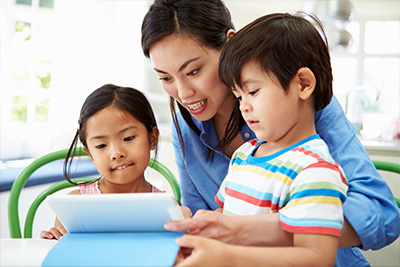Wrap Up

Make screen time an active learning time by asking questions, encouraging your child to make predictions, and making connections with their real life.
In today’s fast-paced, digital world, screens - small and large, are ever-present and play a big role in how all of us, our children included, learn new information. Learning with research-based, educational media, like PBS KIDS, has proven to move the needle in preparing kids for success in school and life. Kids laugh and learn while building skills in early literacy, math, science and nurture social-emotional growth. Now with digital technologies, learning is interactive, engaging and ever mind-expanding.
Making the most out of screen time requires thoughtful planning. Remember the following objectives as you write your screen-time policy:
- Understand the reasons for having a screen time policy.
- Identify different types of technology and mobile devices used to deliver educational media.
- Define the purpose of educational screen media and instructional practices.
- Describe age-appropriate use of screens determined by child development guidelines.
- Explain connection between screen time activities and impact on children’s learning.
- Connect learning that happens on screens to real life, hands-on learning off screen.
Check It Out!
 Visit Thinkport to see our early childhood online courses and register to earn clock hours in child development, curriculum planning and other Core of Knowledge areas.
Visit Thinkport to see our early childhood online courses and register to earn clock hours in child development, curriculum planning and other Core of Knowledge areas.
>> Thinkport Early Childhood Courses
Check out the following resources to learn more about making the most of screen time.
- American Academy of Pediatrics Announces New Recommendations for Children’s Media Use
- Beyond Screen Time
- Common Sense Media: Screen Time
- Making the Most Out of Kids’ Screen Time
- NAEYC: Technology and Media
- Office of Educational Technology: Guiding Principles for Use of Technology with Early Learners








